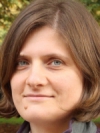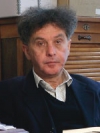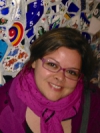Welcome

Unstable Elements
Our program this year also demonstrates the blurring of boundaries between documentary and animation, which were worlds apart just a few years ago. Nowadays they join forces to create new hybrid forms that provoke, surprise, and stimulate the imagination in an effort to depict reality. Verzio 11 features a rich harvest of over 60 documentaries from all over the world. They were made with passion and commitment, and we hope they impact the audience. Over the coming festival days you will travel across the globe; discover the multicultural treasures of India; meet Hungarians in different parts of the world; gain insight into the waves of protests in Ukraine, Romania, the Arab world, and the United States; face the consequences of nuclear energy use; and learn about the possibilities and dangers of the digital universe. Our world is in flux. Let’s stay focused. Oksana Sarkisova, festival director |

Optical pulse
A Documentary filmmaker sometimes arrives at a location, which is not (yet) a scene; it is not the scene of a revolution, torture, or ethnic cleansing, it is not the scene yet but just a location. And in the course of recording what is happening there, what looks like first as just fight, cruelty or violent acts taking place randomly, without a premeditated plan, gradually solidifies in the perception of the cinematographer into an object, a notion, a nameable category: ethnic cleansing, genocide, sexual slavery, war of independence. The viewer is able to follow the process whereby the object of the film emerges. On other occasions, the sequence of the documentary work is the opposite: the filmmaker proceeds like a social scientist, a forensic investigator, or a writer, who tries to reconstruct the events that lead to the (found, identified, named) object on the scene: to colonization, or liberation, radical feminism, dissent, or to genocide. The film is a sort of reverse engineering; the effort aims at disassembling the object, in order to show how the seemingly random, and sometimes insignificant acts brought the abstraction, the object of analysis about. The documentary filmmaker may decide to go on by showing the suspended, barely visible particles that make up the dark sky, or to focus on the grey clouds that hide the sun. We, lay humans, are able to see only the visible mass that darkens the sky. The clouds, however, that cast a shadow on the life beneath, are always different; their form is defined by the unique constellation of liquid droplets or frozen crystals that could be detected only by special equipment, by a particular competence. In order to enable us to understand the unique, always specific situation, it is not sufficient for the filmmaker to show the abstract, although nameable, object, but the particular, simple, barely visible acts that – sometimes without, or even against, the will of the actors – give births, so often, to monstrosities. István Rév, director, Open Society Archives |

Ten Years Gone
From the initial dedicated crowd of a few thousand, Verzio's last edition attracted close to seven thousand people to cinemas throughout the city of Budapest. Over the years, the program was enriched with a Doclab for documentary professionals, master classes, conferences, photo exhibits, a student jury, a free Re-Verzio Best of spring series and many other interesting programs to further engage both the audiences and the filmmakers. Verzio films live on in the OSA collections and are available for research and educational purposes (www.osaarchivum.org). Thanks to all the critical thinkers who have joined us over the years, those who are coming for the first time, and everyone who has supported us and sent us their films. In the spirit of continuing the dialogue on human rights in Hungary, I wish you all a meaningful, challenging, uplifting, thought-provoking and above all a fun festival. Anikó Kövecsi, managing director |





